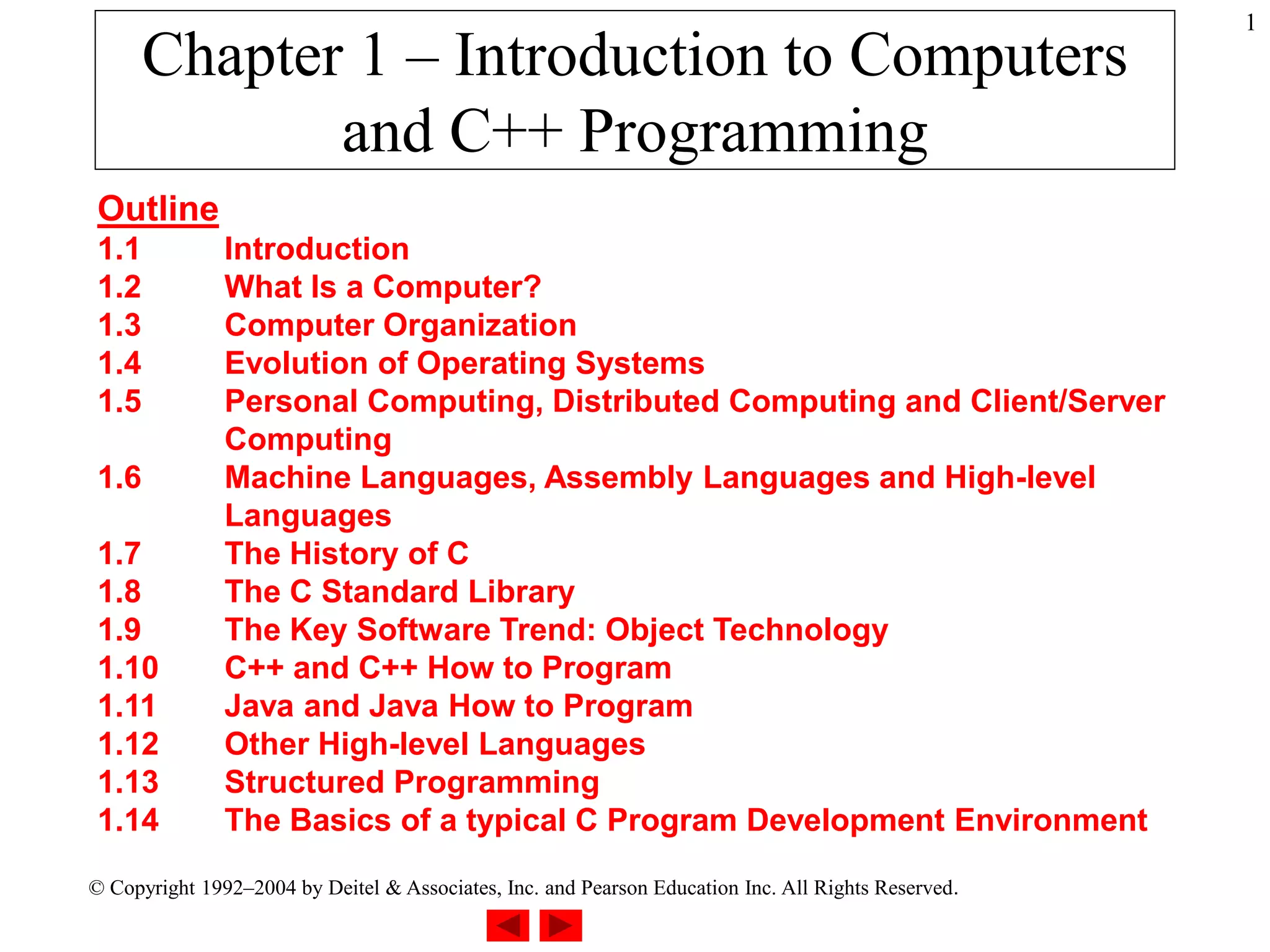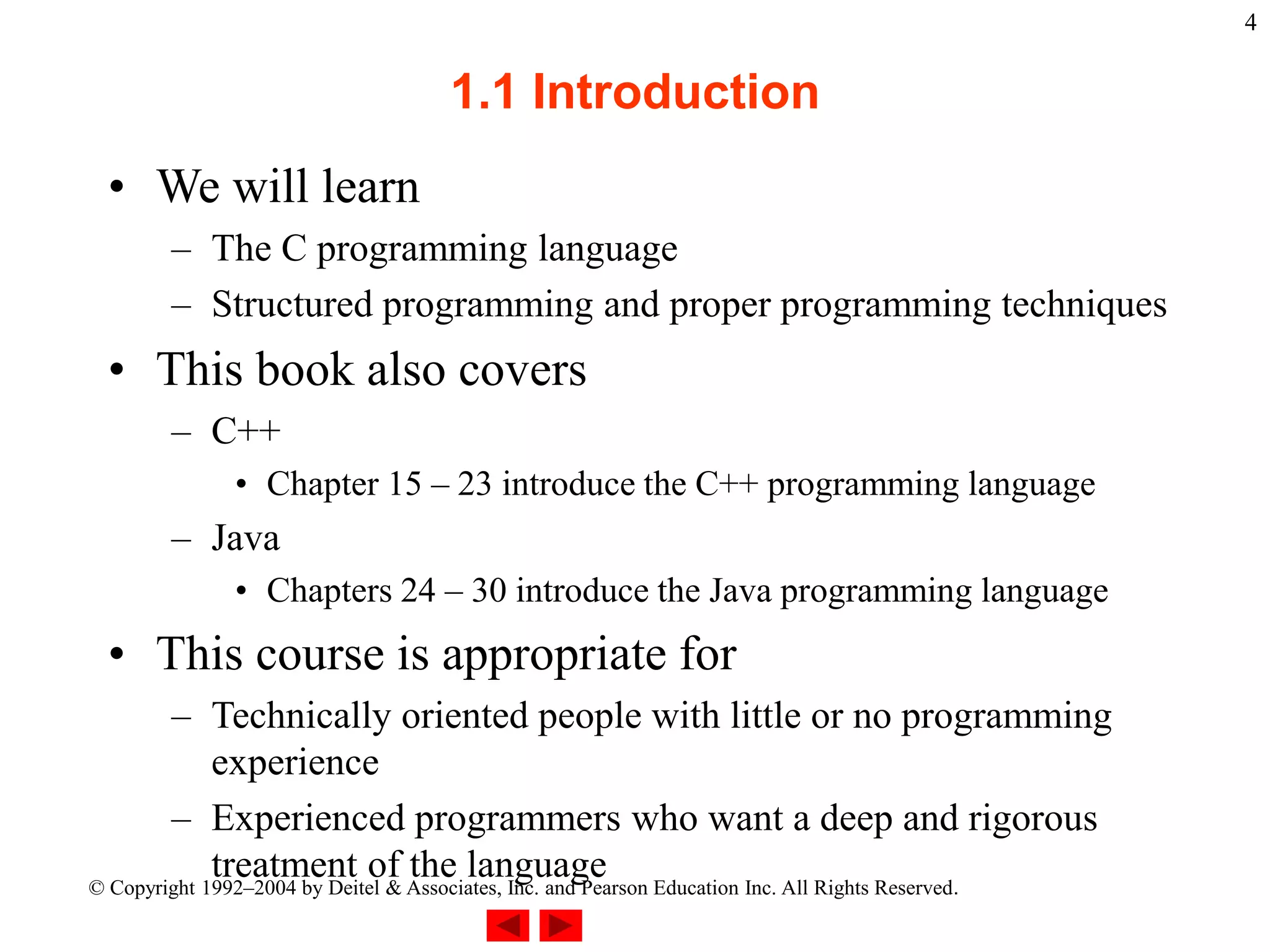This chapter introduces key concepts about computers and programming. It discusses the history and components of computers, as well as different types of programming languages like machine language, assembly language, and high-level languages. The chapter also summarizes the history and uses of C, C++, Java, and the standard library. It outlines the typical process of developing a C program and trends in hardware, networking, and the internet.






















